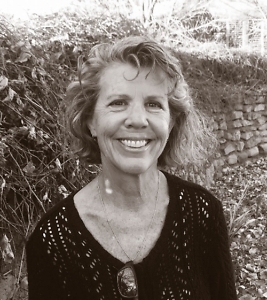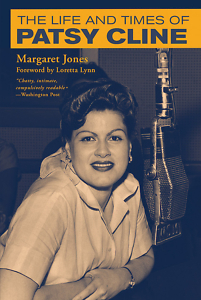The Quintessential Pop-Country Singer
The Life and Times of Patsy Cline offers deep background on a Nashville icon
Margaret Jones’ The Life and Times of Patsy Cline describes a brief moment in the history of country music when the approaches that had characterized the genre since its beginnings were upended by technology and the changing demographics of the country audience. Cline’s career as a star and quintessential pop-country figure was also brief, spanning the decade between her signing to the 4 Star Records label in 1954 and her death in an airplane crash in March 1963. Cline innovated within the boundaries of commercialism without losing her feel for the subtlest nuances, and her best records transcend genre.

Jones does the job of a real reporter throughout The Life and Times of Patsy Cline. The book, originally published in 1994 and recently released in a new edition by the Country Music Foundation Press, provides deep background about Cline’s rise from rural Virginia — where she grew up in the hamlet of Gore before settling with her family in the comparative metropolis of Winchester — to the kind of stardom that landed her on the stage of The Grand Ole Opry. As Jones makes clear, Cline was both a great performer and a consummate artist in the recording studio, and the records she made in the two years before her death represent the so-called Nashville Sound of the 1950s and ‘60s at its most artistically fulfilled.
Cline was born Virginia Patterson Hensley in 1932. Her father was a violent man who drank heavily and began sexually abusing Cline when she was 11 years old. She started singing live on WINC, a 250-watt Winchester radio station, in 1948 and won a local talent contest held at a movie theater. She worked butchering chickens at Rockingham Poultry, near Winchester, before graduating to a job as a waitress in a soda shop.
By 1952 she had begun to go by the stage name of Patsy, derived from her middle name. Her moniker was completed when she married Gerald Cline in 1953. Her live act in the mid-‘50s was compelling and quite transgressive for its time. She sported white cowboy boots, a pair of fringed short-shorts, and a décolleté top — she liked to incite an audience. Like another boundary-pushing artist, Elvis Presley, Cline aspired to fluidity: She was a pop vocalist who phrased like a jazz artist, but her audience perceived her as a country-and-western singer.
 In time-honored music-business fashion, Cline signed a bad record deal that hampered her career for years. Bill McCall, who ran the California label 4 Star Records, had eased into the record business after making money on his Nevada mining claims, which included sites that yielded fluorspar, a mineral that was used along with shellac to manufacture records. By 1947 McCall had shifted his interests to making semi-flexible vinylite records, and he ran 4 Star as a glorified lease operation, not a true record label.
In time-honored music-business fashion, Cline signed a bad record deal that hampered her career for years. Bill McCall, who ran the California label 4 Star Records, had eased into the record business after making money on his Nevada mining claims, which included sites that yielded fluorspar, a mineral that was used along with shellac to manufacture records. By 1947 McCall had shifted his interests to making semi-flexible vinylite records, and he ran 4 Star as a glorified lease operation, not a true record label.
Still, McCall’s eye on the bottom line and his interest in how technology could help that bottom line made him a prophet of post-war America. Cline made good records for 4 Star, but it wasn’t until she signed with Nashville’s Decca Records in late 1960 that she began to reap the benefits of the advances in recording techniques that modern listeners discern in her 1960 and 1961 renditions of “I Fall to Pieces,” “Crazy,” and “She’s Got You,” all of which topped the charts in the post-rock ‘n’ roll and pre-Beatles world of pop.
Jones does a good job of telling the story of Cline’s association with Nashville record producer Owen Bradley, whose work with Cline amounts to a series of small, modernist masterpieces of country. Cline turned songs by up-and-coming Nashville tunesmiths like Harlan Howard and Willie Nelson into hits suburbanites could enjoy. For adepts of pure singing, the late-‘50s and early-‘60s Grand Ole Opry performances released on the 1988 album Live at the Opry represent Cline at her greatest. Her high notes in that album’s version of Eddie Miller’s “I’ve Loved and Lost Again” are thrilling, but you don’t get the idea she was showing off.
Cline’s death in one of pop music’s most mythologized plane crashes — she was 90 miles west of Nashville when her private plane went down on March 5, 1963 — ensured her status as an icon of heartbreak. Her easeful combination of pop and country still sounds modern. Her motives and her inner self — and the nature of her relationships with men — remain somewhat opaque, despite Jones’ best efforts to psychoanalyze her. Jones quotes songwriter Mae Axton on the mystery of Cline’s personality:
She was a very emotional sort of person …. She’d get to appreciating somebody and liking them, and pretty soon if something disturbed her, her emotions went toward him. She would feel kind of guilty, but then she didn’t think it was bad if she could make somebody happy. She had sometimes different thoughts than most of us.

Edd Hurt is a writer and musician in Nashville. He’s written about music for Nashville Scene, American Songwriter, No Depression, The Village Voice, and other publications. He produced and played keyboards on The Contact Group’s 2021 album of 1970s covers, Varnished Suffrages.


